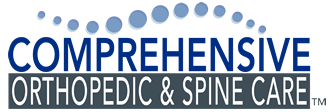Shoulder Labral Tear: Symptoms, Diagnosis & Treatment Options
Shoulder Labral Tear: Symptoms, Diagnosis & Treatment Options
Shoulder labral tears are a common cause of shoulder pain and instability—especially in athletes and active adults. The labrum is a ring of cartilage that helps stabilize the shoulder joint; when torn, it can lead to clicking, catching, weakness, and difficulty with overhead activity.
At Comprehensive Orthopedic & Spine Care, Dr. Joseph E. Weinstein, DO—a shoulder specialist—provides expert diagnosis and treatment, from non-surgical care to minimally invasive arthroscopic labral repair.
What Is a Labral Tear?
- The shoulder labrum deepens the socket (glenoid), helping stabilize the ball-and-socket joint.
- Tears can occur from falls, repetitive overhead motions, dislocation, or degeneration.
- Common types:
- SLAP tear (Superior Labrum Anterior to Posterior)
- Bankart tear (anterior/inferior labrum—often from dislocation)
- Posterior labral tear (less common; often from repetitive loading)
Symptoms
- Deep shoulder pain or aching
- Clicking, popping, or catching with motion
- Weakness in overhead activities or reaching behind
- Feeling of instability or “slipping”
- Reduced range of motion, especially with throwing or lifting
Causes & Risk Factors
- Sports: baseball, tennis, volleyball, swimming, weightlifting
- Traumatic events: falls, collisions, shoulder dislocation
- Repetitive overhead work or exercise
- Age-related wear and tear
Diagnosis
- Detailed physical exam focusing on shoulder stability and labral-specific tests
- Imaging:
- X-ray to rule out fractures or arthritis
- MRI or MR arthrogram to visualize labral tears
- When needed, diagnostic arthroscopy can confirm the tear and treat it in the same procedure
Treatment Options
Non-Surgical Care
- Activity modification and rest
- Physical therapy to restore shoulder mechanics and rotator cuff strength
- Anti-inflammatory medications
- Targeted injections (corticosteroid) for pain and inflammation
Surgical Care (When Needed)
- Arthroscopic labral repair for unstable or persistent tears
- SLAP repair or biceps tenodesis (depending on tear type and age/activity)
- Bankart repair for instability following dislocation
- Debridement for frayed tissue in select cases
Recovery & Rehabilitation
- Sling support for 2–4 weeks (procedure-dependent)
- Early passive motion to protect the repair, followed by active range of motion
- Progressive strengthening at 6–12 weeks
- Return to sport/work typically 3–6+ months depending on tear type and activity
When to See a Shoulder Specialist
- Ongoing shoulder pain >2–3 weeks
- Recurrent dislocations or feeling of instability
- Pain with overhead activity, plus clicking/catching
- Failure of home care or recurring injuries
Why Choose Comprehensive Orthopedic & Spine Care
- Shoulder-focused expertise from Dr. Joseph E. Weinstein, DO
- Advanced imaging and minimally invasive arthroscopy
- Personalized rehab plans for athletes and active adults
- Same-day appointments available in Queens (including Rego Park), Valley Stream, Englewood, and across the NYC metro
Take the Next Step
If you suspect a shoulder labral tear, schedule a consultation with Dr. Weinstein today. Early diagnosis and treatment help restore stability, prevent further damage, and get you back to the activities you love.
When you subscribe to the blog, we will send you an e-mail when there are new updates on the site so you wouldn't miss them.

